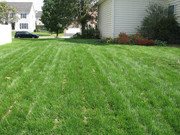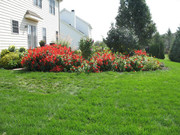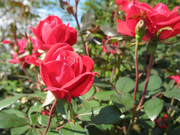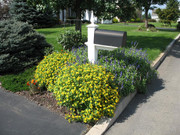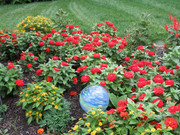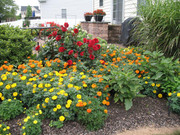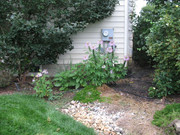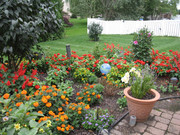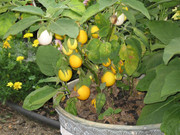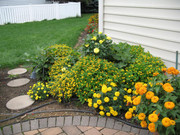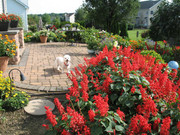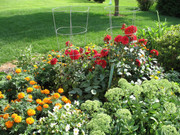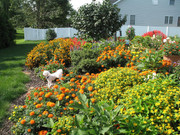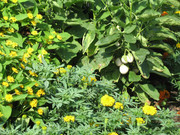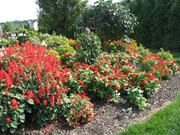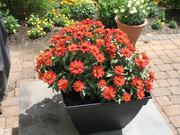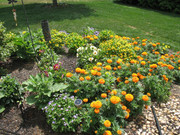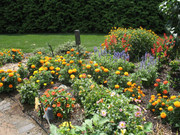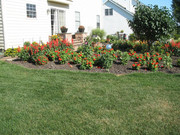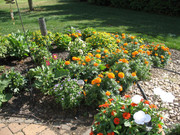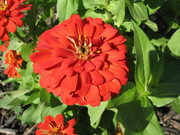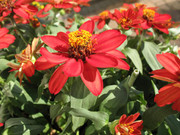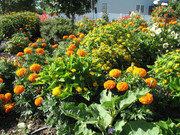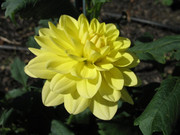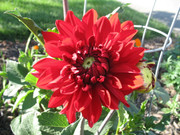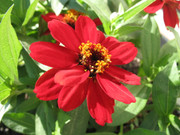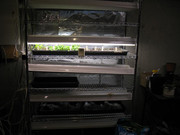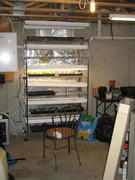We're getting rainfall in occasional drips and drops, but nothing appreciable. The grass is starting to go dormant, although I'm maintaining the gardens, of course.
You can water, about an inch a week total on most northern (and most southern, for that matter) lawns, done either all at once, once a week, or half the amount twice a week. Mow as long as you can tolerate the lawn to preserve water, and try to mow very early in the morning or just before sunset to minimize water lost to bleeding.
If you'd rather not water, that's fine for northern lawns, at least. Bluegrass will go dormant and incidental rainfall is usually more than enough to keep the roots alive. Rye and fescue will stop growing and are tolerant of weeks of little to no rain, although they have no dormancy mechanism as such. For southern lawns, Bermuda will go dormant and the mechanism is at least as good as bluegrass'.
If you see the dry spell coming, stop mowing. Even if the lawn is a little long, don't mow it. Longer grasses use less water, and shade their soil better, slowing evaporation of the water that remains.
Try to minimize the wear on the lawn during the drought. Normal usage isn't a problem, but a game of football might not be the best idea. Grasses that aren't quite fully dormant will take damage, as will fescue and rye that can't go fully dormant.
Don't feed. That's a good summer rule to begin with, but skip even the organics.
And other than that, don't worry too much. Grasses can tolerate a summer drought just fine and, worst-case, you may have to reseed in some places in very early fall.
